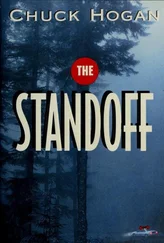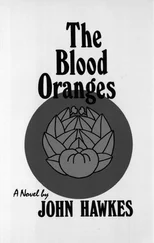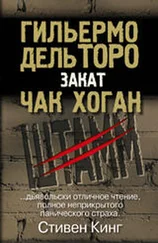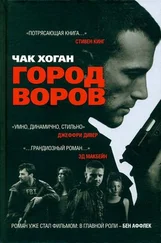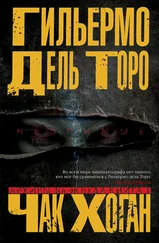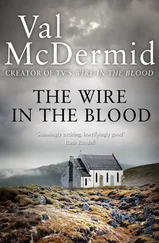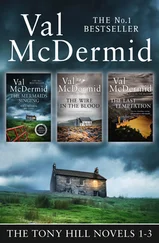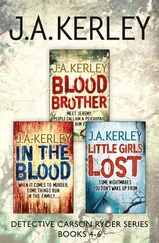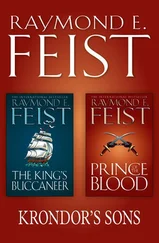A four-wheeled wooden cart rested on twin rails to the right, containing hand tools and mining implements, pickaxes, hammers. The inside walls of the cart were dented and stained black.
We withdrew from the cave at once. Further exploration was never considered. The chance of compromising our suits was too great, the floating dust itself a formidable potential vector.
We followed the rails along a well-trod path to a long, flat-roofed, pale brick building to the right of the rise. Severed treetops were spaced in large pots atop the roof, and camouflage netting hung halfway down each of the high walls.
The wooden double doors were not secured. Inside, Peter’s beam found four more wheeled carts on alternate rails, one filled with broken chunks of brownish-black ore still encrusted with dirt. The main track fed directly into what appeared to be a small refinery. We moved along the length of the left wall, past ovens, stone crushers, smelting vats, and piping, to the end of the line, where beneath a short, iron flume stood a sealed twenty-gallon drum painted sugar white. Peter found a steel rod and pried off the cover, which popped and fell with a clamor against four more barrels behind. It was full of sand packed chunks of clean, dark, lustrous ore laced with quartz. Peter picked up a small piece and turned it over in the light of his beam.
“Pitchblende,” he said. “Uranium ore.”
Radioactive material. I backed away from the barrel, and brushed something with my boot. My light found a small bat lying dead in a dried streak of blood. Its brown wing membrane was curled and spattered with sores. I turned my torch up toward the ceiling, pipes leading like steel vines to exhaust portals in the grimy roof. The vent windows along the high side walls were unscreened and open to pest and rodent intrusion. I looked back at the floor; it was fouled with guano.
We exited the infested building and crossed the road to a smaller structure fashioned of the same corrugated metal as the camp shanties, but twice the dimension, and bolted edge to edge. Rats and mice lay twisted along the roadside at our feet, as though having crawled out of the underbrush to die. Peter opened the door on the darkness, and we heard a rodent like scattering. His flashlight beam swept a long wooden counter where the miners had evidently been served lunch and dinner. We moved behind it to a cramped cafeteria-style kitchen, and there he illuminated four objects set along a high shelf next to a stack of tin food trays. They were flowering plants of some sort, well-dead now, cauliflower like eruptions of bunched petals spilling off a broad stalk around medusan strands of horny stigma. The pots holding them were cracked where the root system had burst through the clay and forced out dirt and leggy spindles. The color had since faded off the wrinkled petals, like a comic book bleached by the sun, leaving only shadows where apparently garish streaks of color once rioted.
Peter turned to me, his flashlight hanging down, fallen leaves and crumbs of dirt shining in its puddle of light.
“Four weeks ago the miners broke through the dry gallery wall they thought was the rear of the cave,” he said. “They followed a quartz vein of uranite down into a wide cavern running beneath most of the camp, beneath us now. It was a rich deposit. They held an impromptu celebration dinner that night, and some of them brought up a few of the strange plants discovered below. The cavern dips into the water table down there; they had to have waded through it. The ceiling is lower than two meters in places, the stalagmites and stalactites pointed and sharp. They reported large, strange-sounding flying insects. The soil in there hadn’t been disturbed for centuries, perhaps never.”
“How do you know all this?”
“Kaunda’s tablet. He was a camp doctor hired to hand out quinine and Praziquantel tablets to keep the workers working, and got in way over his head. The glass cabinet in his dispensary, stocked with bottles: half are routine medical, peroxide, alcohol; the other half bourbon bottles with the labels soaked off. I found it tucked in there. He began charting the spread after the fifth or sixth incidence. It originated simultaneously in two cave workers and a female cook. The cooks were unmarried women who also accommodated the miners as prostitutes. A fourth case occurred in Kaunda’s nurse; the virus spread quickly from there. Animals too. Pigs, sheep, and goats all crashed or had to be put down within days of the first human case.”
I took a moment to digest this. “What about the girl?”
“She never came into camp. Neither did her mother. Mr. Moutouari was in charge of the mine and came and went regularly back and forth by bicycle. He led the first expedition down into the cavern after it was discovered. Maybe he brought up one of the more exotic flowers as a present.”
I envisioned Jacqueline outside her front door, thrilled with her father’s gift of a fantastically queer wildflower, placing it into a small porcelain vase and raising the petals to her nose for a deep breath.
Peter continued, “In any event, someone fronted this excavation. The camp was set up to bring out the pitchblende and clean it off to be packaged and shipped out where it could be milled for uranium. Whoever it is, they’ve abandoned this place now. The disease scared them off. Moutouari must have warned them. There haven’t been any food shipments in more than a week.”
“Radioactive ore,” I said. “With whatever ancient microbes are sealed in down there. A closed system, mutating, slow-cooking the RNA, selecting and reselecting over time.”
Peter agreed. “Over the millennia. A magma chamber of viruses. These people go down there and break the seal, disrupt the ecosystem. That’s phase one.”
“Then carry it back up here.” I nodded. “Whatever they brushed up against, or whatever is in these plants, whatever they breathed, it surfaces and they are infected.”
“The cave is clearly the epicenter. The surrounding camp is densely populated. From the incident group to their families, and the nurse to her patients. Then to non-mine workers, the bar owner, the tailor. The far camp was the last to get it.”
“Casual contact, then. And aerosol delivery, but with limited capacity. It burns through the camp. Phase two.”
“And now phase three,” Peter said. “Opportunity for secondary spread must exist. The insect census is a wash for vectors — more species of bug in this tiny camp than in the entire state of Georgia. The river tests clean, no fish washing up yet. But mammals carry it.”
Peter saved words by moving his light beam back and forth between us.
“Someone could become infected and vector this virus back to the U.S.” I agreed. “There’s no physical boundary here, no safe wall we can put up between us and the bug. The sunlight is killing it in the clearing, and keeping it off the trees. But not for long.”
Peter nodded meaningfully, looking into the darkness of the diseased kitchen.
I said, “If this has gotten out already, and is showing up anywhere else, we need to know. An international alert. We need entomologists, zoologists.”
Peter shook his head distractedly. “Too hot,” he said. “Containment is most imperative now. Kaunda’s log said there hadn’t been any ore shipments out in almost a month — they thought the cave had run dry. We’re contained now. More people here means only more meat for the bug.”
“But we need support. I’m seeing only limited success in trauma. Fluid management is only marginally effective in slowing the process.”
Peter snapped off his light. “Or prolonging the agony,” he said. “It’s going to burn right through this camp, nine doctors or nine hundred.”
He was right, of course. As we left the kitchen I found myself feeling oddly reinvigorated, anxious to get back to trauma. Our challenge had finally taken shape. Peter opened the metal door and we emerged into the apricot dawn of our third day in the jungle.
Читать дальше


